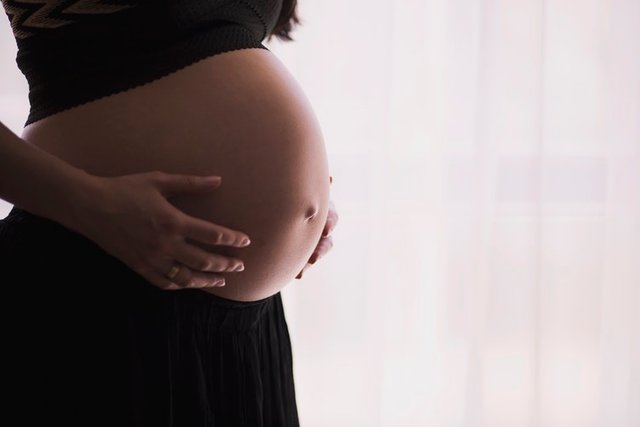Physiological Changes In Pregnancy
The pregnant woman
Pregnancy especially when desired is an exciting experience for individuals but is often heralded by lots of body changes that can be frustrating to the woman and even people around her.
You see her beginning to look different, She becomes emotionally labile, gush she is so irritable and manifests all sorts of annoying behaviors. She sleeps a lot and eats a lot, and worse still does little. She is vomiting and spitting too much, and that is annoying right? . Awww she looks much uglier, darker and even bloated. Yes can say more depending on your unique experience(s).
But it's not her fault
Pregnancy is associated with lots of body changes aimed at optimization the environment for the growing fetus and preparing the woman for the tasks ahead - labour and delivery. Most of these changes are hormonally driven and leads to metabolic, physical, emotional and behavioral changes that often times affect the social functions of the pregnant women. Hence proper understanding of these changes will help one in coping with, or being more tolerant when dealing with them.
What really happens
In pregnancy, lots of substance(hormones) are secreted, some have raised levels as compared to non pregnancy state. These hormones have varied functions in different parts of the body tissues and system aimed at optimization the body for accommodating the growing fetus, but might result in perceived disturbances to the mother, especially when aggravated. The various hormones in interplay in pregnancy include progesterone, estrogen, human chorionic gonadotrophins(HCG), human placental lactogen (HPL), Prolactin, Insulin-like growth factor, etc. Their exact mechanism of action and specific effect in each organ system will be discussed in future write-up.
Such changes include physical, behavioral, heamatological, respiratory, cardiovascular, gastrointestinal, renal and musculoskeletal changes.
Behavioral changes
Of course the degree of these changes vary from person to person but the common ones often seen include spitting, vomiting, irritability, mood swing, excessive sleep and eating, decreased exercise tolerance. Some may start loving foods they hated, and otherwise or may even start craving for abnormal substance.
Physical changes
Physical changes will include weight gain, breast enlargement, she may appear darker and have more acnes.
Heamatological changes
The blood cells(RBC) production increases, water in blood(plasma volume) and total blood volume increases even more with the overall effect of making the woman pale. There is also increase level of blood clothing factors and increased risk of clot formation.
Drainage fluids(lymphatic and venous) from the legs can partially obstructed by the enlarging uterus and the legs begins to swell up, or worm-like things (varicosity) begins to appear on the led.
Respiratory changes
They have increased ventilation and their brain becomes more sensitive to any little rise in carbondioxide. They have increased lung function, all aimed at providing adequate oxygen to the growing fetus.
Cardiovascular changes
The heart beats a little more faster, blood volume is raised, among of fluid returning to the heart(pre-load) increases, the volume of blood the heart pushes out when it contracts(stroke volume) also increases.
All these help to send enough blood and nutrients to the growing fetus, but may be associated with dizziness, palpitations and decreased exercise tolerance.
Gastrointestinal tract changes
The gut(stomach, intestines) are relaxed, their motility reduced and food stay longer in them. They are also displaced up by the enlarging uterus.
The lower oesophagial sphincter is also relaxed.
All these can predispose her to lots of problems like constipation, heart burns, indigestion and dyspepsia.
Urinary tract/renal changes
The muscles of the ureter is relaxed and may become enlarged and urine begins to stay longer in them, this can predisposed them to infection of the urinary tract.
Blood flow to the kidney is increased, more urine forms( increased GFR) and they begin to urinate more frequent.
The growing uterus can also be compressing the bladder and results in frequent urination.
Musculoskeletal changes
Their lower back arches forward to help maintain balance. This can lead to occasional back and waist pain.
The soft tissue structures(ligaments and cartilages) around her lower back and waist becomes lax and more flexible. This will allow for expansion of the waist(pelvis) during childbirth without trauma.
Why am I writing this?
People with poor understanding of this normal changes tend to have more difficulty copying with them.
Some pregnant women have come to clinic worried why they are gaining weight, getting darker or having difficulty coping with some their social functions. Others have expressed concerns about the well being of their fetus once they have any of these symptoms.
Some men have come to clinic complaining how their wives have started using pregnancy as excuse for doing nothing and requesting for this and that to eat.
And of course knowledge of this will help prospective mothers and their partners cope better.
References
Wikipedia: Maternal physiological changes in pregnancy


Congrats @Omaqiin
Your great article has been selected to feature in this week Air-Curation Round 17.
Expect an upvote from a supporter of this initiative.
Continue using the #Air-Cliniic tag.
Thank you much @air-clinic. I feel honored.